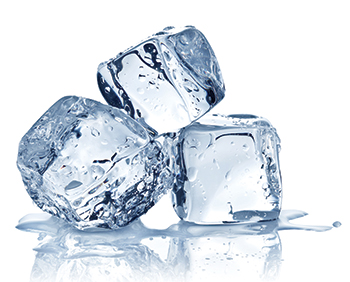Ice machines work by extracting heat from an evaporator plate and expelling it from the unit. Typically, air-cooled systems pump the heat out of the box into the kitchen, where it is cooled by air conditioning. Normally, when an operation needs to produce 1,000 pounds of ice or more per day, it is recommended that a remote ice machine be employed.
 There are small and large remote units, although the bulk of those used in commercial foodservice are bigger in size. In air-cooled units, the condenser and condenser fan are located in the ice machine cabinet to bring air into the machine and exhaust it out. With a remote unit, the condenser is taken out of the cabinet and placed on the facility’s roof or another location up to 55 feet away. It is connected to the cabinet with copper tubing or lines.
There are small and large remote units, although the bulk of those used in commercial foodservice are bigger in size. In air-cooled units, the condenser and condenser fan are located in the ice machine cabinet to bring air into the machine and exhaust it out. With a remote unit, the condenser is taken out of the cabinet and placed on the facility’s roof or another location up to 55 feet away. It is connected to the cabinet with copper tubing or lines.
If space is at a premium, remote air-cooled units are preferable since these require space or clearance to breathe in the kitchen. Another benefit of remote units is less noise in the kitchen or front of house. This type of ice machine is also ideal for situations where operators seek to keep kitchen temperatures cooler or operate the air conditioner more efficiently. It is often used in self-serve drink applications for convenience stores as well as quick-serve and fast-casual restaurants.
Remote ice machines generally feature galvanized and stainless-steel construction. Hoses connecting the remote condenser to the machine come precharged or the technician can charge in place after the install.
Remote ice machines can produce cubed, flaked or nugget ice. Capacities range from 500 to more than 2,500 pounds of ice per day. Unit widths vary by manufacturer but are typically 22, 30 or 48 inches.



